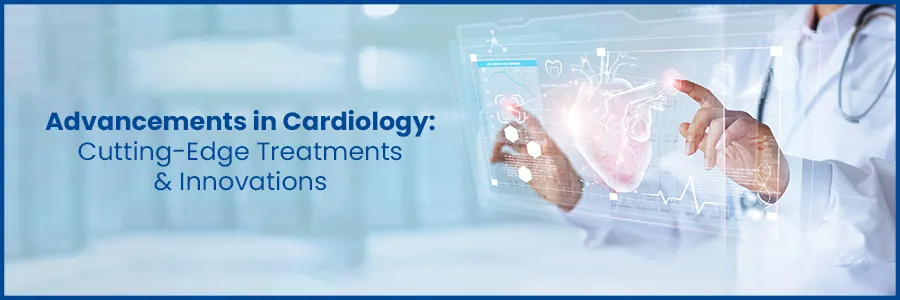
Unlocking Cutting-Edge Innovations in Cardiology
The field of cardiology has witnessed remarkable advancements over the past few decades, revolutionizing the diagnosis, treatment, and prevention of cardiovascular diseases (CVDs). As researchers and medical professionals continue to push the boundaries of medical science, new treatments and innovations are emerging that promise to transform the landscape of cardiology. In this article, we will explore some of the cutting-edge treatments and innovations that are reshaping the field of cardiology.
Precision Medicine: Tailoring Treatment to the Individual
One of the most significant advancements in cardiology is the rise of precision medicine. Gone are the days of one-size-fits-all treatment approaches for cardiovascular diseases. With the advent of genomics and personalized medicine, cardiologists are now able to tailor treatments based on a patient's genetic makeup, lifestyle, and specific risk factors.
Genetic testing has enabled the identification of specific genetic mutations that predispose individuals to certain cardiac conditions. This information allows doctors to develop targeted therapies and interventions to address these genetic vulnerabilities. For example, patients with a genetic predisposition to familial hypercholesterolemia, a condition characterized by high cholesterol levels, can now benefit from specialized medications that target the underlying cause of their condition.
Precision medicine also extends to the realm of diagnostics. Advanced imaging techniques, such as cardiac MRI and CT scans, provide detailed insights into a patient's heart structure and function. These tools enable cardiologists to make more accurate diagnoses and develop personalized treatment plans that cater to each patient's unique needs.
Minimally Invasive Procedures: A Paradigm Shift
In recent years, there has been a paradigm shift towards minimally invasive procedures in the field of cardiology. Traditional open-heart surgeries are being replaced or complemented by innovative techniques that involve smaller incisions, reduced trauma, and faster recovery times.
- Transcatheter Aortic Valve Replacement (TAVR) TAVR is a groundbreaking procedure that has transformed the treatment of aortic valve stenosis, a condition where the heart's aortic valve becomes narrow, restricting blood flow. Instead of open-heart surgery, TAVR involves inserting a replacement valve through a catheter, usually via the femoral artery. This minimally invasive approach is particularly beneficial for older patients or those who are considered high-risk candidates for surgery.
- Percutaneous Coronary Intervention (PCI) PCI, also known as coronary angioplasty, is a minimally invasive procedure used to treat coronary artery disease. During PCI, a catheter is threaded through the blood vessels to the narrowed or blocked coronary artery. A balloon is then inflated to widen the artery, often accompanied by the placement of a stent to maintain blood flow. This procedure can relieve chest pain and improve blood flow to the heart without the need for open-heart surgery.
Regenerative Medicine: Healing from Within
Regenerative medicine is a rapidly evolving field with the potential to revolutionize cardiac care. It involves harnessing the body's own regenerative capabilities to repair damaged tissues and organs. In cardiology, regenerative therapies aim to restore heart tissue after a heart attack or in cases of heart failure.
- Stem Cell Therapy Stem cells have the unique ability to develop into various types of cells, making them a promising tool for tissue repair. Cardiac stem cell therapy involves injecting stem cells directly into the heart muscle to stimulate regeneration and repair. While still in the experimental stages, early results have shown the potential for improving heart function and reducing scar tissue formation.
- Cardiac Tissue Engineering Researchers are exploring the use of tissue engineering to create functional heart tissue for transplantation. By combining cells with biocompatible materials, scientists aim to construct patches of cardiac tissue that can integrate with a patient's heart, potentially restoring its function.
Secure your health with a second opinion. Make informed decisions and book your appointment today!
Get A Second OpinionArtificial Intelligence (AI) and Machine Learning
The integration of artificial intelligence and machine learning algorithms is transforming the way cardiologists diagnose and treat cardiovascular diseases. These technologies have the ability to analyze vast amounts of data, identify patterns, and provide insights that can aid in clinical decision-making.
- Early Diagnosis and Risk Prediction AI-powered algorithms can analyze patient data, including medical history, imaging results, and genetic information, to identify subtle indicators of cardiovascular diseases. This early detection enables timely interventions and preventive measures, reducing the risk of complications.
- Image Analysis and Interpretation Interpreting complex cardiac images, such as echocardiograms and MRIs, can be challenging. AI algorithms can enhance image quality, assist in identifying abnormalities, and even predict future heart events based on subtle visual cues that may be missed by human observers.
- Drug Discovery and Development AI is accelerating drug discovery by simulating the effects of potential medications on the cardiovascular system. This speeds up the process of identifying promising drug candidates and optimizing their efficacy.
Telecardiology: Bridging Gaps in Healthcare
Telecardiology, the remote diagnosis and treatment of cardiovascular conditions, has gained significant traction, especially in underserved or remote areas. Through telecardiology, patients can access expert care without the need to travel long distances, reducing barriers to timely treatment.
- Remote Monitoring Wearable devices and mobile apps equipped with ECG sensors enable patients to monitor their heart health in real-time. These devices can alert both patients and healthcare providers to any irregularities, facilitating prompt intervention.
- Virtual Consultations Telecardiology allows patients to have virtual consultations with cardiologists, providing access to specialized care and reducing the need for in-person visits, especially for routine follow-ups and check-ups.
Nanotechnology: Delivering Targeted Therapies
Nanotechnology holds immense promise in the field of cardiology by enabling the precise delivery of medications to specific areas of the heart. Nanoparticles can be engineered to carry drugs directly to damaged or diseased tissues, minimizing side effects and enhancing therapeutic effectiveness.
- Drug Delivery Nanoparticles can be loaded with medications and targeted to areas of inflammation or plaque buildup in the arteries, improving drug delivery and reducing the risk of systemic side effects.
- Imaging and Diagnostics Nanoparticles can be designed to bind to specific molecules associated with heart disease, allowing for more accurate and sensitive imaging techniques.
Conclusion:
The field of cardiology is undergoing a remarkable transformation, driven by a convergence of cutting-edge technologies and innovative approaches. From precision medicine and minimally invasive procedures to regenerative therapies and AI-powered diagnostics, these advancements are improving patient outcomes, enhancing quality of life, and shaping the future of cardiovascular care. As researchers continue to push the boundaries of medical science, the potential for further breakthroughs in cardiology remains boundless, promising a future where heart diseases are better understood, prevented, and treated.
Ready to take control of your health journey? Book your appointment now and start your path towards wellness today!
Book an AppointmentFrequently Asked Questions
Precision medicine involves tailoring cardiovascular treatments to an individual's genetic makeup, lifestyle, and risk factors, leading to more personalized and effective care.
Examples include using genetic testing to identify familial hypercholesterolemia and prescribing targeted medications based on a patient's genetic predisposition to certain heart conditions.
Transcatheter Aortic Valve Replacement (TAVR) is a minimally invasive procedure for aortic valve stenosis. It involves inserting a replacement valve through a catheter, reducing the need for open-heart surgery and allowing for faster recovery.
Stem cell therapy involves injecting stem cells into the heart muscle to stimulate tissue regeneration and repair, potentially improving heart function after a heart attack or in cases of heart failure.
Telecardiology refers to remote diagnosis and treatment of cardiovascular conditions using technology, such as virtual consultations and wearable devices, to bridge gaps in healthcare access.
AI analyzes patient data, aids in early disease detection, enhances image interpretation, accelerates drug discovery, and supports clinical decision-making.
Nanotechnology enables precise drug delivery and targeted imaging by using nanoparticles to carry medications to specific areas of the heart, reducing side effects and enhancing therapeutic outcomes.
PCI is less invasive than open-heart surgery and involves faster recovery times, making it a preferred option for treating coronary artery disease.
Yes, AI algorithms can analyze patient data to identify patterns and indicators that may predict future heart events, allowing for proactive intervention.
Cardiac tissue engineering involves creating functional heart tissue in a lab using cells and biocompatible materials, which can potentially be transplanted to restore heart function.
Wearable devices equipped with ECG sensors enable real-time heart monitoring, early detection of irregularities, and timely intervention, enhancing patient care.
While regenerative therapies like stem cell therapy are still in experimental stages, they hold promising potential for future heart disease treatments.
Telecardiology allows patients in underserved or remote areas to access expert cardiovascular care through virtual consultations and remote monitoring.
Yes, nanoparticles can be engineered to bind to specific molecules associated with heart disease, enabling more accurate and sensitive diagnostic imaging.
Advancements in cardiology have the potential to improve patient outcomes, reduce complications, and shape the future of heart disease prevention, diagnosis, and treatment.
